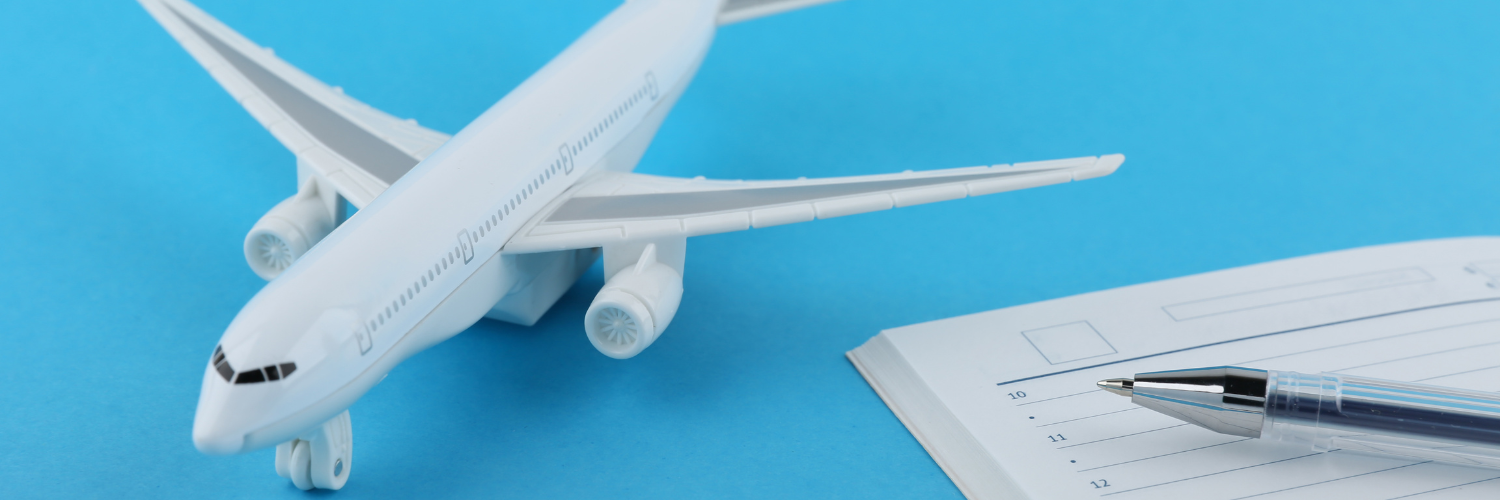Nurse Types / Flight Nurse
Nurses deal a lot with trauma. One of the specialties within nursing that tackles trauma head-on is the flight nurse.
Flight nurses work with patients who need emergency evacuation via helicopter or airplane to a medical facility. Their patient’s trauma is often so severe they can’t go by ground transport.
If you’re interested in a nursing career that’s fast-paced and combines compassion and nursing know-how, you might want to explore becoming a flight nurse.
In this article, you can discover:
- What is a flight nurse?
- What do flight nurses do?
- Where do flight nurses work?
- What are closely related fields?
- How do you become a flight nurse in 3 steps?
- What are additional requirements of flight nurses?
- What are the salary and career outlooks for flight nurses?
What is a flight nurse?
A flight nurse is a registered nurse who specializes in providing pre-hospital emergency care on an aircraft. They work with physicians and paramedics to ensure that their patients receive the care they need during transport.
Often, flight nurses deal with acutely ill and injured patients in high-pressure, often unstable environments.
As a flight nurse, you must provide hospital-level service to patients in your care in tandem with the rest of the healthcare team.
Qualities of a successful flight nurse
As a flight nurse, you serve patients who are in life-or-death situations. What complicates matters is the fact that you must perform your nursing duties on an aircraft without the benefit of all the tools and additional resources available in a trauma center or hospital.
Successful flight nurses possess are:
- Critical thinkers. Adapting life-saving medical care to an aircraft setting requires innovation and quick thinking.
- Patient advocates. Your patients may not be able to think or speak for themselves depending on their injuries. It’s your job to ensure they receive the best care while in-flight.
- Problem-solvers. Without all the normal resources you find in an emergency room or trauma care setting, you must figure out how to solve patient needs with the tools on board the aircraft.
What do flight nurses do?
Flight nurses work to help patients who can’t be transported by ground. They provide vital triage care to the patient to help make sure they arrive at the hospital safely.
Some of the principal duties of the flight nurse include:
- Inspecting the condition of acutely ill patients upon arrival and beginning treatment
- Communicating with emergency departments on the condition of patients along with ETA
- Performing advanced critical care intervention and monitoring vitals throughout the flight
- Performing regular maintenance on specialized onboard medical equipment
- Taking inventory of medical supplies, instruments, and medication
A day in the life of a flight nurse
A day in the life of a flight nurse can be hectic and stressful. You’re tasked with keeping patients – many of whom have extensive trauma – stable enough to get to an emergency medical care facility for life-saving treatment.
Some of your responsibilities during a typical shift may include:
- Checking (or packing) a medical kit for in-flight use.
- Monitoring patients for signs of physical or psychological distress that can affect their well-being.
- Overseeing your patient’s unloading from the aircraft before accompanying them to the hospital or treatment facility.
NURSE TIP

Common conditions treated by flight nurses
Flight nurses often care for patients with severe physical trauma, including those suffered during accidents. Some of the medical conditions you may treat include:
- Burns
- Crushing injuries
- Fractured bones
- Head trauma
- Skull fractures
- Spinal fractures/injuries
- Traumatic brain injuries
Where do flight nurses work?
Flight nurses can work in public, government, or military environments. Nurses who work in the public often work for:
- Hospitals and trauma centers
- Fire departments
- Independent medical transportation companies
- Hospital-based research facilities
Nurses who work for the government can work at the federal, local, or municipal level. Flight nurses who work for the military typically work overseas or with the military reserves.
What are closely related fields?
If you’re interested in careers that provide life-saving transport to people in medical emergencies but hate flying, you have options. One of the most closely related fields to flight nursing is EMTs or paramedics.
EMTs and paramedics respond to emergency calls. They perform medical services while transporting patients to hospitals for further medical treatment. These medical services are provided using ground transport, such as an ambulance.
Get job matches in your area + answers to all your nursing career questions

How do you become a flight nurse in 3 steps?
Becoming a flight nurse takes time. You have to accumulate almost five years of experience in the ICU or emergency department. Most nursing roles don’t require that much time of service before entering a role.
Here are the complete requirements for becoming a flight nurse.
Step 1 – Become a registered nurse
All flight nurses are registered nurses (RNs) who have specialty training in emergency medical care. If you don’t already have a nursing degree and are not registered, this is the first step.
Earn a degree
You can earn either an Associate Degree in Nursing (ADN) or a Bachelor of Science in Nursing (BSN) to become an RN. You can receive your associate’s degree in two years at a community college. Your bachelor’s degree takes about four years at a college or university.
If you already have a bachelor’s degree in an unrelated discipline, you can fast-track your career change to nursing with an Accelerated BSN program. RNs who want to complete their BSN degree can enroll in an RN-to-BSN program that gets them there faster.
Pass the NCLEX exam
Once you graduate from the nursing program, the next step is taking the NCLEX-RN exam. This is a standardized test that will allow you to become an RN. The tests cover eight core areas of care. These include:
- Management of Care/Coordinated Care
- Basic Care and Comfort
- Health Promotion and Maintenance
- Psychosocial Integrity
- Physiological Adaptation
- Pharmacological and Parenteral Therapies
- Reduction of Risk Potential
- Safety and Infection Control
Step 2 – Accumulate experience
Potential flight nurses need to gain at least five years of experience working as an RN in the ICU or emergency department. Doing so prepares you for the kind of trauma situations you’ll encounter as a flight nurse.
Helpful skills and experience
Some of the most helpful skills and experience you can seek are those involving patients with severe physical trauma. You can work in a hospital emergency room or a trauma center, where you’ll gain experience helping patients with a variety of life-threatening medical conditions.
Changing specialty to a flight nurse
If you’re already an RN, changing your specialty to a flight nurse requires continuing education courses focused on trauma care and emergency transport.
Another easy switch in nursing specialties is going from a medical-surgical nurse to a flight nurse. You already have experience working with patients with severe physical trauma. You just need to seek out nursing certifications that demonstrate your skills before making the switch.
Step 3 – Obtain certifications
The last step to becoming a flight nurse involves obtaining certification. The certification for flight nurses is the Certified Flight Registered Nurse (CFRN). The Board of Certification gives this to Emergency Nursing (BCEN).
What are additional requirements of flight nurses?
Flight nurses, like other RNs, must renew their nursing licenses every one to four years. Completing continuing education courses usually is part of renewing your license.
If you hold certifications, you also must keep them up-to-date. The CFRN certification must be renewed every four years.
What are the salary and career outlooks for flight nurses?
The national average salary for flight nurses is $86,070. Depending on your experience and location, it’s possible to earn more.
Registered nurses continue to be in demand, both in-flight and on-location in medical facilities throughout the U.S. Demand for RNs is expected to increase by 6% between 2021 and 2031.
Get job matches in your area + answers to all your nursing career questions

Job satisfaction
RN job satisfaction, regardless of location or specialty, hinges on factors like proper staffing and adequate feedback on performance.
Next steps
Flight nurses who want to advance their careers have plenty of opportunities. You can complete an advanced nursing degree like a Master of Science in Nursing (MSN) or Doctor of Nursing Practice (DNP).
You can explore your options by asking questions of nursing professionals who are working in your desired nursing roles. They can provide insight to help you decide your best course of action.
FAQs
A flight nurse is a registered nurse (RN) who provides medical support to patients being transported via aircraft to a hospital or other emergency medical treatment facility.
The national average salary for flight nurses is $86,070. Depending on your experience and location, it’s possible to earn more.
To become a flight nurse, you must earn an associate degree in nursing (ADN) or a Bachelor of Science in Nursing (BSN). You also must pass the NCLEX exam to get your RN licensure. A few years of emergency experience is also required.
Sources
Get job matches in your area + answers to all your nursing career questions

Sources
- A Day in the Life of a Flight Nurse. flydoc.org. Accessed November 8, 2022.
- Board of Certification for Emergency Nursing (BCEN). bcen.org. Accessed November 8, 2022.
- EMTs and Paramedics. bls.gov. Accessed November 8, 2022.
- Flight nurses’ comprehension about their role in the multiprofessional team of aero-medical transport. pubmed.ncbi.nlm.nih.gov. Accessed November 8, 2022.
- Flight Nurse Salary. ziprecruiter.com. Accessed November 8, 2022.
- Nursing in 2022, in 8 charts. advisory.com. Accessed November 8, 2022.
- Occupational Outlook Handbook. Registered Nurses. bls.gov. Accessed November 14, 2022.
